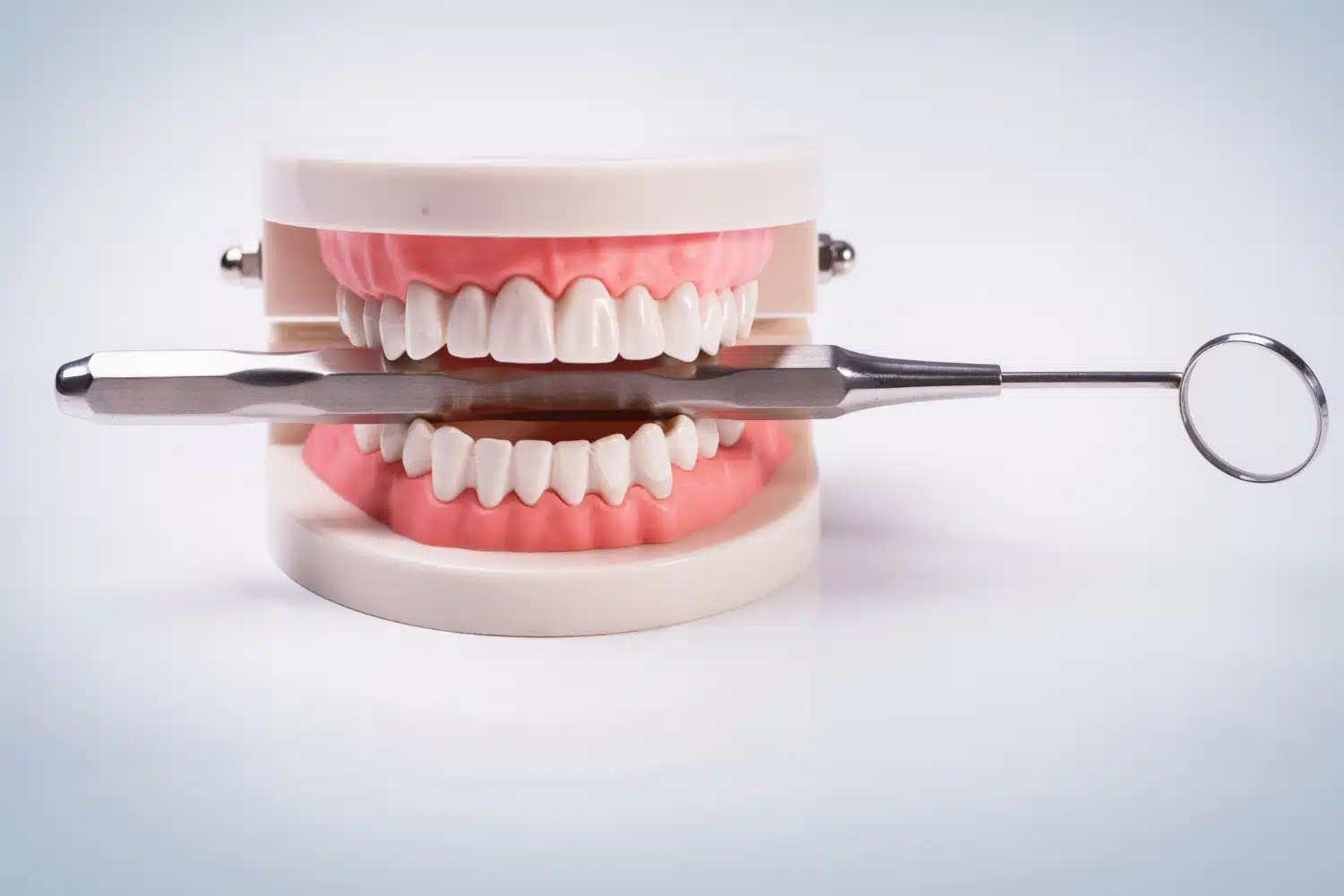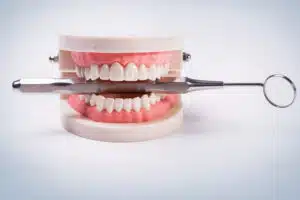Choosing the Right Specialist: Periodontist vs. Orthodontist

Periodontists and orthodontists are often at the top of the list when people talk about mouth health. Have you ever thought about the differences between these dental specialists and when it would be best to look for their help? You are not the only one, then. A lot of people have problems with their oral health, from gum problems to problems with their teeth not fitting together properly. When comparing a periodontist vs. orthodontist, it can be hard to figure out which expert to see.
What is a Periodontist?
Meet the Periodontist—Your Gum’s Best Friend!
Picture this: you’re enjoying your favorite meal, and suddenly you notice some bleeding when you brush or floss your teeth. That’s where the periodontist comes in! Periodontists are the go-to experts when it comes to the health of your gums and the supporting structures of your teeth.
What Do They Do? Periodontists are like detectives in your mouth, hunting down and treating gum issues with precision. They specialize in:
- Gum Disease Management: Dealing with conditions like gingivitis and periodontitis.
- Scaling and Root Planing: A fancy way of deep-cleaning your teeth and roots.
- Gum Surgeries: When necessary, they can perform surgical procedures to restore gum health.
- Dental Implants: For replacing missing teeth with strong, natural-looking alternatives.
When to See a Periodontist: If you notice symptoms like bleeding gums, persistent bad breath, or your teeth feeling loose, it’s time to pay a visit to a periodontist. They’ll help you get your gum health back on track and ensure that your smile remains bright and healthy.
What is an Orthodontist?
Meet the Orthodontist—the Master of Teeth Alignment!
Now, let’s shift our focus to orthodontists, the experts responsible for making sure your teeth are beautifully aligned and your bite is just right.
What Do They Do? Orthodontists are like architects for your smile. They specialize in:
- Teeth Alignment: Correcting crooked, misaligned, or crowded teeth.
- Bite Correction: Ensuring your upper and lower jaws meet comfortably.
- Braces: Using braces to gently move your teeth into the desired position.
- Invisalign: Offering clear, removable aligners as an alternative to traditional braces.
When to See an Orthodontist: If you’re dealing with issues like overbites, underbites, crossbites, crowded teeth, or just want a straighter smile, it’s time to consult an orthodontist. They’ll create a treatment plan tailored to your needs, helping you achieve a perfectly aligned and confident smile.
Periodontist vs. Orthodontist: Education and Training
Periodontists
Becoming a periodontist requires dedication and a passion for gum health. These specialists undergo extensive education and training, including:
- Undergraduate Degree: Like all dentists, they start with a bachelor’s degree, often in a science-related field.
- Dental School: They spend four years in dental school, earning a Doctor of Dental Medicine (DMD) or Doctor of Dental Surgery (DDS) degree.
- Residency: The path to becoming a periodontist takes a turn after dental school. They embark on a three-year residency program focused solely on periodontology. During this time, they gain hands-on experience treating various gum conditions and performing surgical procedures.
In some cases, periodontists pursue additional training in areas such as dental implantology to further specialize in restoring smiles with dental implants. Many also obtain board certification from organizations like the American Board of Periodontology to demonstrate their expertise.
Orthodontists
Orthodontists, on the other hand, dedicate their studies to the art and science of tooth alignment and bite correction. Their educational journey includes:
- Undergraduate Degree: Similar to periodontists, they start with a bachelor’s degree, often in a science-related field.
- Dental School: After completing their undergraduate studies, they attend dental school for four years, earning a DMD or DDS degree.
- Orthodontic Residency: The distinguishing factor is their pursuit of a specialized orthodontic residency, which typically lasts two to three years. During this residency, they focus exclusively on the diagnosis, prevention, and treatment of misaligned teeth and jaws.
Similar to periodontists, orthodontists may choose to seek board certification through organizations like the American Board of Orthodontics, showcasing their expertise and commitment to excellence in their field.
In both cases, rigorous education and training are integral to ensuring that these specialists are equipped with the knowledge and skills needed to address the unique challenges posed by gum health and tooth alignment. As patients, we benefit from their expertise and dedication to delivering the best possible care for our smiles.
Periodontist vs. Orthodontist: Treatment Approaches
Periodontist’s Treatment Methods
Periodontists are your go-to experts for gum-related issues and maintaining the health of the supporting structures around your teeth. Here are some of the common treatment methods they employ:
- Scaling and Root Planing: If you’re dealing with gum disease, your periodontist may recommend scaling and root planing. This non-surgical procedure involves deep-cleaning your teeth and root surfaces to remove plaque and tartar buildup. It’s like giving your gums a fresh start.
- Gum Surgeries: In more severe cases of gum disease, surgical intervention may be necessary. Periodontists are skilled in performing various gum surgeries, such as flap surgery or gum grafts, to repair damaged tissues and restore gum health.
- Dental Implants: Missing teeth? Periodontists are experts in placing dental implants. These are natural-looking, long-lasting replacements that fuse with your jawbone, providing a stable foundation for crowns, bridges, or dentures.
Orthodontist’s Treatment Methods
Orthodontists specialize in creating beautifully aligned smiles and ensuring your bite functions optimally. Their treatment methods may include the following:
- Braces: Traditional braces use brackets and wires to gradually move your teeth into the desired positions. They are effective for correcting a wide range of alignment issues, from crooked teeth to complex bite problems.
- Invisalign: If you prefer a more discreet option, orthodontists offer Invisalign. These clear, removable aligners are custom-made to fit your teeth and provide a virtually invisible way to straighten your smile.
- Retainers: After your orthodontic treatment, your orthodontist may provide you with retainers. These devices help maintain the new alignment of your teeth and prevent them from shifting back to their previous positions.
When comparing a periodontist vs. orthodontist, the key difference lies in the focus of their treatments. Periodontists concentrate on preserving the health of your gums and supporting structures, while orthodontists specialize in achieving proper tooth alignment and bite function. Whether you require gum disease management, dental implant placement, or teeth straightening, these specialists are dedicated to enhancing your oral health and giving you a smile to be proud of.
Periodontist vs. Orthodontist: Conditions and Problems They Address
Periodontists: The Gum Gurus
Periodontists are the experts when it comes to gum health and the supporting structures around your teeth. Here are some of the conditions and problems they address:
- Gingivitis: If you’ve noticed bleeding, redness, or swelling of your gums, you might be dealing with gingivitis. Periodontists can diagnose and treat this early stage of gum disease to prevent it from progressing to a more severe form.
- Periodontitis: When gingivitis is left untreated, it can advance to periodontitis, a more serious form of gum disease. Periodontists specialize in managing and treating periodontitis, which can involve deep cleanings, surgical procedures, and ongoing maintenance.
- Gum Recession: Receding gums can expose the sensitive root surfaces of your teeth, leading to discomfort and an increased risk of tooth decay. Periodontists can perform gum-grafting procedures to cover exposed roots and restore gum tissue.
- Dental Implants: If you’re missing one or more teeth due to gum disease, injury, or other reasons, periodontists are skilled in placing dental implants to replace missing teeth and restore your smile’s function and aesthetics.
Orthodontists: The Alignment Experts
Orthodontists specialize in ensuring that your teeth are properly aligned and that your bite functions harmoniously. Here are the conditions and issues they excel at addressing:
- Overbites: An overbite occurs when your upper front teeth overlap excessively with your lower front teeth. Orthodontists can design treatment plans to correct this alignment issue and improve your bite.
- Underbites: Conversely, underbites occur when your lower front teeth protrude further than your upper front teeth. Orthodontic treatment can help bring your bite into proper alignment.
- Crossbites: Crossbites happen when some of your upper teeth sit inside your lower teeth when you bite down. Orthodontists can work to resolve crossbite issues for better alignment and function.
- Crowded Teeth: If your teeth are too close together or overlap, it can make cleaning and maintenance challenging. Orthodontic treatments like braces or Invisalign can gradually move your teeth into the right positions.
Orthodontists use their expertise to assess your bite and tooth alignment, design personalized treatment plans, and guide your teeth into their ideal positions. Achieving a well-aligned smile not only enhances your appearance but also contributes to better oral health and functionality.
Get Started on Your Perfect Smile Today!
Looking for an experienced and friendly orthodontist Suttons Bay or in Northern Michigan? Dr. Ron Lints, a certified Diamond Invisalign Provider and Diplomate of the American Board of Orthodontics, is here to help. With three convenient locations in Elk Rapids, Traverse City, and Suttons Bay, your dream smile is just a consultation away.
If you’re interested about Invisalign Suttons Bay and braces Suttons Bay or any of our offices, schedule your orthodontic consultation with Dr. Lints today!
BOOK AN APPOINTMENT
GETTING STARTED WITH INVISALIGN
If Invisalign sounds like it is the right fit for you, call or text us to set up a complimentary consultation. During this consultation, Dr. Lints and team will:
- 1. Review your dental and medical history
- 2. Perform a complete oral exam
- 3. Help you determine if Invisalign is the best route for you
- 4. Create you a customized treatment plan with before and after simulation
- 5. Discuss flexible payment plan options and insurance benefits if applicable




